
Designing for Curiosity with the Children’s Museum of Atlanta
Curiosity and creativity expand throughout all age groups, and our strong desire to poke around and discover made for a great collaboration between Georgia Tech students and one of Atlanta’s discovery focused spaces for youth.
Teaming up with the Children’s Museum sparked the students’ whimsical side, bringing about ideas for six exhibits that ranged from learning about nutrition in a fun and interactive way to playing and discovering light and photography. The exhibits varied in both design and intent, but one thing they all had in common was the use of lively and joyful colors.
Born out of the School of Industrial Design at Georgia Tech, the new course titled Designing for Curiosity, embraces design methods and user experience discovery. The course was led and developed by Assistant Professor with joint appointment at the School of Industrial Design and School of Interactive Computing, HyunJoo Oh.
Her intention is that her course, Designing for Curiosity, introduces fundamental design methods to students. “I hope that students can apply further practices of design across various interaction design applications through this course, and what better collaboration for practice than the Children’s Museum of Atlanta?” Oh said.
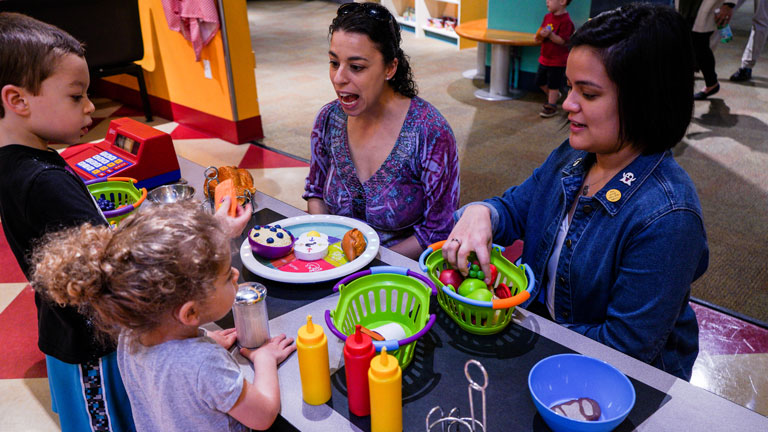
“We collaborated with the museum to design and develop playful and interactive learning experiences for children.”
Exhibit day was the day to really determine how interactive the student designs were. Once doors opened and museum guests began to trickle in, it was only a matter of time until the children naturally gravitated to the six new exhibits they had never played with before.
Discovery and play were a success! The dynamic exhibits triggered wonder among the curious patrons.
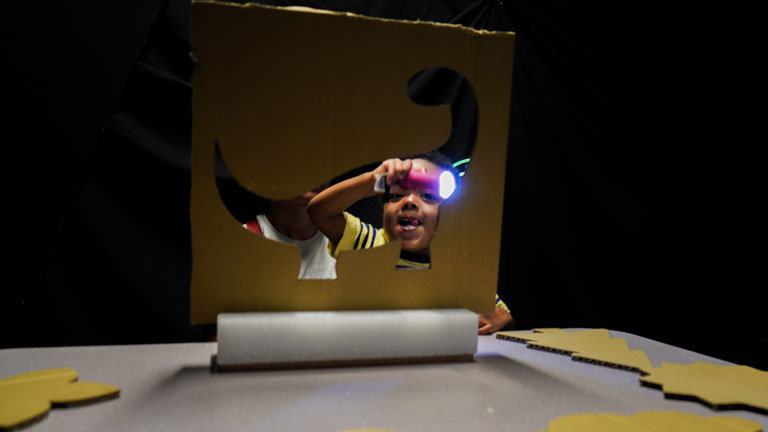
All in all, the collaborative experience was favorable for all parties involved. For student Kelsie Belan, in the interdisciplinary MS-HCI program that combines interactive computing, psychology, and industrial design, working with the Children’s Museum helped her gain real world knowledge of working with a client with a unique customer base.
“Being able to complete research and design based around children's expectations and personas was a very interesting task, and I learned a lot about how to design with learning objectives and tangible goals in mind,” said Belan.
Belan and her team developed the Molecule Forest exhibit that allowed children to walk through the exhibit to engage with the pool noodles that when connected to the half and full dome structure with sensors, would light up to communicate that a molecule structure had been created.
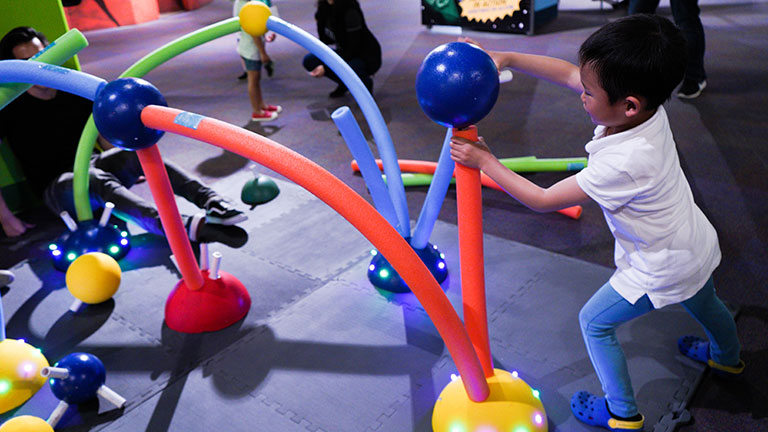
“The Molecule Forest was a success in the museum, and all of our hard work over the semester really paid off. Both children and parents loved interacting with the life-sized play area, and it was really rewarding to see the "aha" moments from the children when they figured how to create the structures,“ she said.
This was the first project for many of Oh’s students that involved designing in a physical space. This challenge allowed them to learn about physical mediums in design, and materials exploration. “We had to consider what materials were safe for children to interact with, and how to make them durable against rough play,” said Belan.
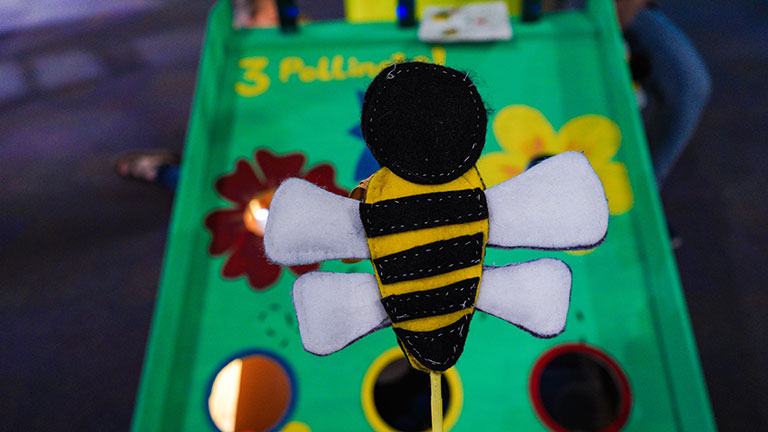
With the amount of success that Designing for Curiosity has had, the museum is excited to continue the partnership. Liz Nevil-Smith, Manager of Exhibits at the Children’s Museum of Atlanta, enjoyed seeing the Georgia Tech design students reinforce her belief that learning through play is relevant and possible at every age.
“We were so impressed with the MS-HCI and MID students’ ideas. They understood that in order to make a fun and educational exhibit, you have to ask a lot of the same questions that kids often ask: "How and why does this work?" "If I change what I'm doing, how will it affect the outcome?" said Nevil-Smith. “They also introduced us to new methods, materials, and technology that we hadn't thought of using before.”
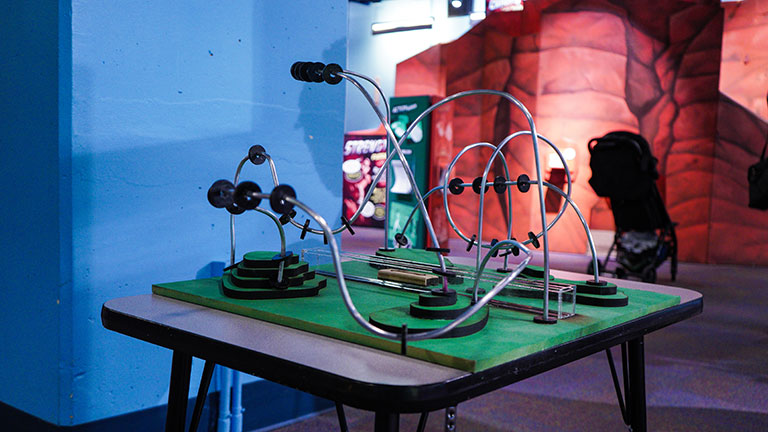
By conquering the design-to-user challenge, students understood that an engaging exhibit was not going to just be a great concept, but that they also needed to be able to translate the concept into an exhibit that the children would understand.
“Some of the concepts that students were interested in introducing were at a higher level than the ages that we serve. But they understood that at this age, every idea and concept is a building block. If the exhibit is engaging and playful for children, they will remember what they learned when they do reach those more complex subjects,” said Nevil-Smith.
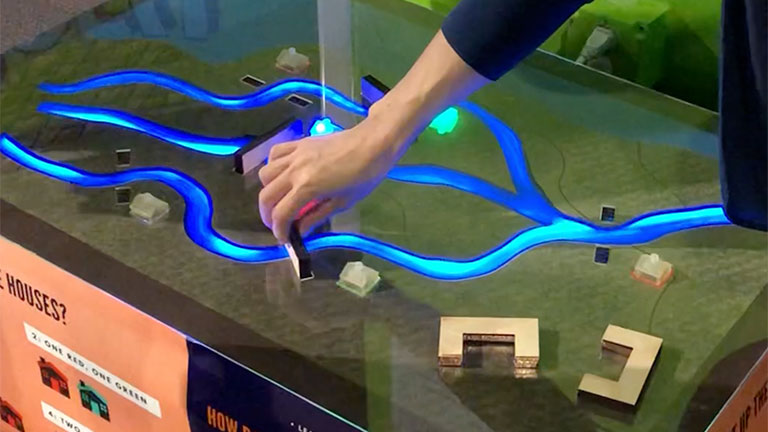
The project was a large learning curve for many of the students, but a very enriching one. “My takeaway is knowing that proper research and design can have positive impacts on the people who use a product, and has helped me reinforce the passion I have for the field that I'm in,” said Belan.
Want to learn more about HyunJoo Oh, Designing for Curiosity, and the School of Industrial Design?